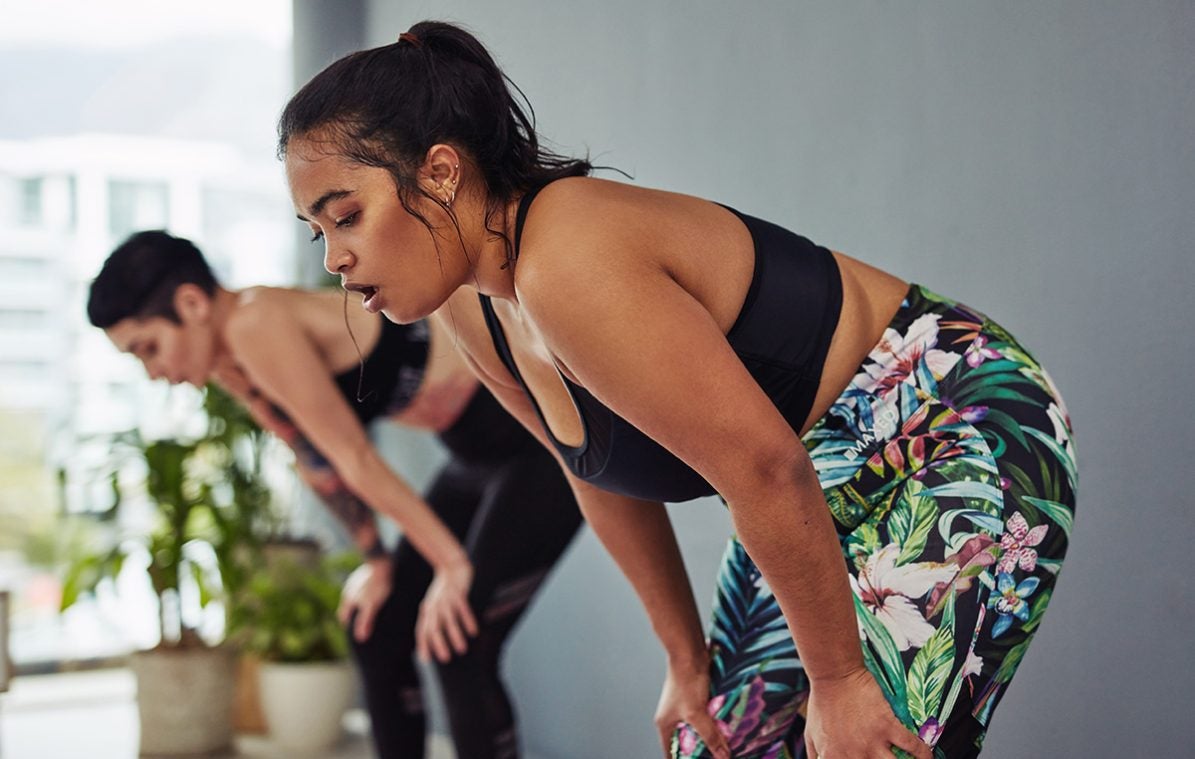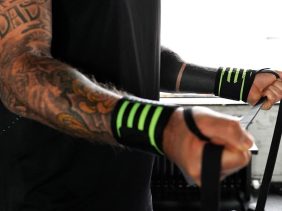You don’t even need shoes for this intense workout
 LumiNola
LumiNola
Working out in socks, you say? The first time I read about a sock or slider workout, I thought it had to be a joke. But once you try it out for yourself, you’ll quickly realize that this is a serious workout. After just ten minutes of sliding on the floor in socks, my muscles were on fire. Since I started doing regular workouts in my socks, I’ve been feeling stronger overall, have really built up more core muscles and have much better posture. Read on to find out why you too should give slide exercises a go.
Do you want a strong core? Find out why abdominal exercises alone won’t do the job and how to get a toned midsection fast.
Before we get started, you’re probably wondering what a sock or slider workout actually is. These exercises focus on the very slow movements that you’re probably familiar with from Pilates. The difference is that your feet slide along the floor. This also means that there’s no jumping or step sequences that you might be used to. In lunges, for instance, you slide your front foot forwards and backwards in a controlled way, rather than pushing off and making a long stride.
Still not convinced? Here are five unbeatable arguments for sock workouts:
#1 You hardly need any equipment
You don’t need much for a workout in socks. Smooth flooring is best, like tiles or parquet. You don’t need a gym mat. Your most important piece of kit is a pair of socks that allow you to slide smoothly along the floor. Woolen socks are ideal. Crucially, they shouldn’t be bobbly, as this will slow you down.
Alternatively, you can use products known as sliders. These are round foam pads that you strap to your hands and feet. The advantage of these is that they generally have a plastic side that means you can also use them on carpeted floors.
#2 Minimal movements, maximum results
Sock workouts aren’t about speed or quantity. Quite the opposite, in fact: you move as slowly and steadily as possible, without momentum. Let’s look at an example: sliding out of the plank position into a downward dog pose and back. The exercise might look pretty easy, but sliding makes it tough: you have to tense all the muscles in your body to hold and change these positions. If you relax for even a second, you’ll slide to the floor. This is what makes sock workouts so effective. Crucially, they’re also easy on your joints.
What if you want to avoid sore muscles? Then make sure your body gets a good supply of the key vitamins and minerals after training, like the ones in our Recovery Aminos.
#3 A strong core
Slider workouts put particular emphasis on your core – the midsection of your body. You have to stabilize all the muscles in your torso in order to get moving, and also to make sure that you don’t immediately slip to the floor. Sliding is one of the most effective types of exercise for your deep abdominal and back muscles.
See also: Core training: 11 exercises for a stable midsection
#4 The perfect home workout
Sock workouts are perfect for anyone who does a lot of exercise at home. They don’t require much room, and no equipment except for a smooth surface and a pair of socks. Another plus is that the workout doesn’t involve any jumps or other noisy movements that could disturb your neighbors.
#5 A variety of exercises for every level of fitness
Doing the same workout routine time after time eventually gets boring, and there’s the problem that your body gets used to familiar exercise stimuli over time. Sooner or later, you’ll need to try something that really challenges you. A sock workout makes a welcome upgrade to your exercise regime and can be worked in whenever you fancy it, whether you’re completely new to workouts, getting back to exercising or a seasoned athlete. Exercising in socks is a challenge for everyone. Just give it a try! But don’t say we didn’t warn you!
More things to know from foodspring:
- Home Workouts versus Gym Workouts – what are the advantages of each?
- The Secret to Getting Fit Without Ever Leaving Your Couch
- 7 home workout mistakes to avoid for fiercer sweat sessions
Sources for this article
We at foodspring use only high-quality sources, including peer-reviewed studies, to support the facts within our articles. Read our editorial policy to learn more about how we fact-check and keep our content accurate, reliable, and trustworthy.





























